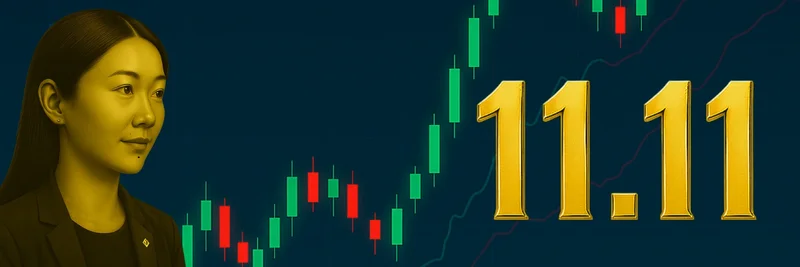Hey there, crypto enthusiasts! If you’ve been keeping an eye on the decentralized finance (DeFi) space, you might have come across Boros—a new platform that’s shaking things up with its margin-based yield trading. Recently, a detailed thread by Leo (@ZLiao3) on X broke down the Boros margin mechanism and when traders might face liquidation. Let’s unpack this in a way that’s easy to digest, even if you’re new to the game!
What Is Boros and Why Should You Care?
Boros, previously known as Pendle V3, is a platform built by the Pendle team to take yield trading to the next level. Unlike its predecessor, Pendle V2, Boros introduces margin trading, allowing users to leverage their positions with unprecedented capital efficiency. This means you can trade yields—like funding rates from perpetual futures—with just a fraction of the capital you’d normally need. Think of it as borrowing money to amplify your trades, but with a twist: it comes with the risk of liquidation if things go south.
Leo’s thread highlights how Boros is designed for both big players (like hedgers) and speculative traders (the “gamblers” of the crypto world). With daily trading volumes of $150-$200 billion on perp exchanges, mastering funding rates could be a game-changer. Ready to dive into the nitty-gritty? Let’s go!
The Basics of Boros Margin (Sheet 1)
At its core, Boros uses a pure margin trading model. Let’s break it down with an example. Imagine you’re trading the um-BTCUSDT market with a notional value of 1,000 BTC. With just 1.2x leverage, you only need 10 BTC as initial margin—super efficient, right? This low margin requirement is a boon for arbitrageurs who hedge funding rates without tying up too much capital.
Leo points out that this setup is friendly for strategies like locking in funding rate arbitrage. Normally, you’d need to lock up a lot of funds, but with Boros, you’re only “borrowing” 1% of the total value. It’s like getting a high-five from DeFi for your smart money moves!
How Settlement Works (Sheet 2)
Settlement is where things get interesting. Boros settles trades multiple times a day (let’s say three times for simplicity). Each settlement eats into your initial margin, leaving you with what’s called available margin. As your position’s value drops closer to maturity, the maintenance margin (the minimum you need to keep your position open) also decreases—similar to how yield tokens (YT) behave.
The difference between the implied yield (what you expect) and the underlying yield (what you actually get) determines your settlement gains or losses. These get added to your collateral over time. Leo gives examples of scenarios where the yields are higher, lower, or equal to expectations, showing how your account net value shifts. It’s like a financial rollercoaster—exciting but with real stakes!
When Does Liquidation Happen? (Sheets 3 & 4)
Here’s the part that keeps traders on their toes: liquidation. Leo outlines two main triggers.
Scenario 1: Margin Runs Dry
Imagine the underlying yield tanks to a crazy -100% APR (yes, that’s possible in volatile markets!). With a 1,000 BTC notional and 1.2x leverage, you’re losing about 1 BTC per settlement cycle. With only 10 BTC as margin, you’d be wiped out in six cycles when your collateral falls below the 4 BTC maintenance margin. Ouch! Leo notes that extreme yield swings—like BTC’s 100%+ annualized moves on platforms like Hyperliquid—can make this a real risk.
Scenario 2: Wild Price Swings
Now, picture the implied yield (your bet) swinging wildly while the underlying yield stays stable. This creates floating profits or losses, impacting your net balance (collateral + unrealized gains/losses). If the implied yield drops to 2%, your net balance could dip below the maintenance margin, triggering liquidation. The formula for maintenance margin is:
Maintenance Margin = (Notional Size * Years to Maturity * Implied APR) / Leverage * 1/2
To avoid bad debt, Boros sets minimum floors for yield and maturity. If you’re shorting (betting yields will rise), the risk spikes faster—kind of like how shorting stocks can backfire quickly.
Leo’s Take and the Bigger Picture
Leo compares Boros to traditional futures markets, where big players hedge with assets like ENA, while retail traders chase high-leverage thrills. The fees—0.05% taker fee and 0.15% per open interest—mirror conventional structures, raising questions about which will dominate revenue. With decentralization adding engineering challenges, the platform’s future is wide open for innovation.
Why This Matters for Meme Token Fans
You might wonder, “What’s this got to do with meme tokens?” Well, as the crypto ecosystem evolves, tools like Boros could influence how meme token traders hedge their bets. High-leverage strategies might spill over into meme markets, especially if funding rates become a hot topic. Keeping an eye on platforms like Boros could give you an edge in understanding broader DeFi trends—perfect for staying ahead in the meme token game!
Final Thoughts
Leo’s thread is a goldmine for anyone curious about Boros’ margin mechanics and liquidation risks. Whether you’re a seasoned trader or just dipping your toes into DeFi, understanding these dynamics can save you from costly mistakes. Check out the full spreadsheet he mentions to play with the numbers yourself. Got questions? Drop them in the comments—we’d love to chat!
Disclaimer: Trading involves risk. Always do your own research before diving in!




